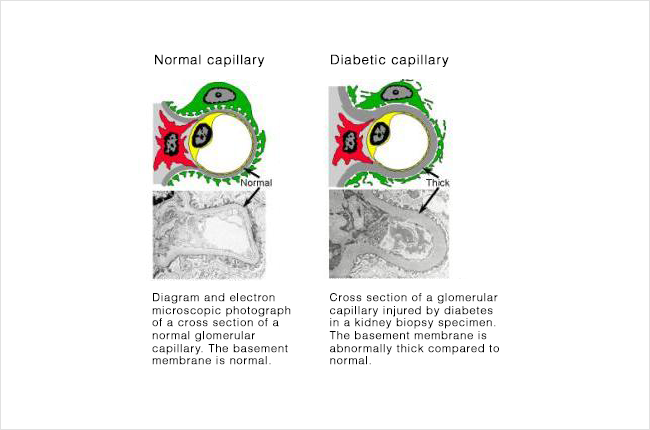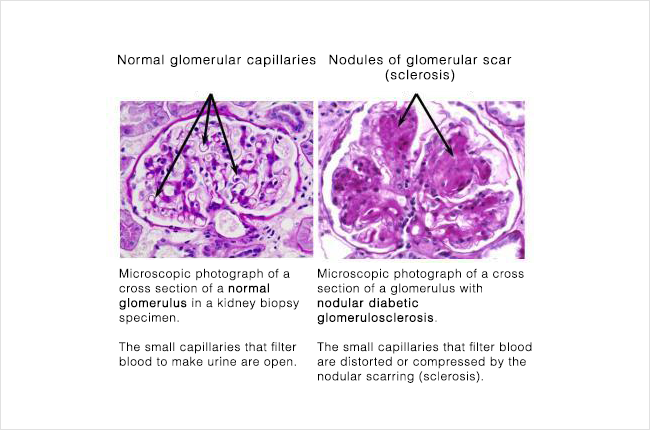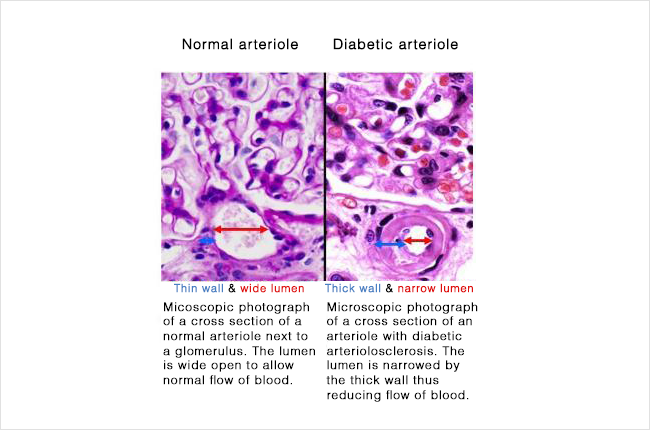Diabetes
Contents
What is diabetes?
Diabetes (or Diabetes Mellitus) is a condition in which the body cannot turn the sugars you eat into useful energy. These sugars are called carbohydrates. Carbohydrates are turned into useful energy. If you have diabetes, instead of becoming energy, the sugar travels directly into the blood unprocessed. This causes high blood sugar. Over time, high blood sugar damages nerves and blood vessels.
Who is affected by diabetes?
Diabetes is a very common condition. Approximately 151 million people around the world have diabetes. Experts think that this number may double within five years. When not properly managed, diabetes is a serious threat to a patient’s vision, heart, and kidneys. However, with medicine and lifestyle changes, diabetics can lead normal, healthy lives.
What is the difference between the types of diabetes?
Both type I and type II diabetes prevent the body from turning sugar into energy. Normally, eating sugar causes an organ called the pancreas to release the hormone insulin. This insulin turns the sugar into energy. Then it signals cells to store this energy for use. In type I diabetes, the pancreas doesn’t make any insulin. It leaves the body with no way to process sugar. In type II diabetes, the pancreas makes insulin. The insulin signals cells to store the energy. But the cells do not respond. Because the cells resist the insulin, type II diabetics are said to be “insulin resistant.” Of the two types of diabetes, type II is much more common.
How does diabetes affect my kidneys?
Diabetes causes injury to small blood vessels throughout the body. Small blood vessels in the kidney are often involved. This causes protein to spill into the urine. One type of protein, albumin, is detected in the urine even during early, mild kidney disease. If progressive chronic disease develops in kidney blood vessels, the kidneys cannot function normally and kidney failure develops.
Diabetic Glomerular Disease
The tiny structures that do the work in your kidneys are called nephrons. Each nephron has 3 parts: 1) a small blood vessel that brings in unfiltered blood, 2) a glomerulus that filters the blood and 3) a small blood vessel that returns filtered blood to the body. The earliest detectable change in glomeruli is thickening of the thin basement membrane. This is part of the filter that separates the blood from the urine. Damage to this membrane causes proteins to leak from the blood into the urine. Damage to the membrane can be identified in a kidney using an electron microscope to show thickening of the membrane.

Diabetic Glomerulosclerosis
Diabetes also can cause progressive scarring of glomeruli. This is called glomerulosclerosis. This scarring often produces nodules (lumps) of scar in the glomeruli and thus is called nodular diabetic glomerulosclerosis.

Diabetic Disease in Arteries and Arterioles
Diabetes also causes scarring in the walls of arteries and arterioles in the kidneys and other tissues. Arterioles are the smallest arteries that connect to capillaries. Arteries and arterioles bring blood carrying oxygen to the tissues of the body. Sclerosis is scarring in the blood vessel wall that causes thickening of the wall and narrowing of the opening through which blood flows. Diabetes causes scarring of arteries and arterioles. When this happens, not enough oxygen reaches the tissue and injury results. This can injure many tissues. The heart, eyes, skin, nerves and kidneys can be affected.

What are my options for treatment?
Prevention and awareness are very important to everyone with diabetes:
- Urinalysis (urine test): All diabetics should have a urine test at least once every year. This test looks for the presence of the protein albumin. This indicates possible kidney damage.
- Blood Sugar Control: Keeping blood sugar levels well controlled helps maintain kidney health. In a recent study, diabetic patients that kept their blood sugar below 150 mg/dl greatly reduced the risk of kidney disease. Some diabetics can manage blood sugar with just oral medication. Others need insulin. Doctors who specialize in diabetes can prescribe insulin. The American Diabetes Association recommends that blood sugars be kept between 90-130 mg/dl on an empty stomach. Blood sugar should be less than 180 mg/dl one hour after eating.
- Blood Pressure: High blood pressure is extremely common in diabetics. It is a major cause of kidney disease. Additionally, kidney disease can make high blood pressure even higher. This creates a vicious cycle. Often, it takes multiple medications to control high blood pressure. This is especially true for diabetics, obese patients, and the elderly. The American Diabetes Association recommends checking blood pressure twice every year. Keeping blood pressure below 130/80 is also recommended. Patients who cannot control their blood pressure with diet and exercise alone are usually prescribed blood pressure reducing medicine. This is known as an “ACE inhibitor” or an “ARB”.
- Cholesterol: High cholesterol is common in diabetics. Therefore, the risk of developing kidney disease from high cholesterol is a concern. This concern makes controlling cholesterol very important. Sometimes a healthy, balanced diet is enough to control cholesterol. Sometimes medication is needed. The American Diabetes Association recommends that the LDL (bad cholesterol) be less than 100. HDL (good cholesterol) should be higher than 40. Triglycerides should be less than 150.
- Controlling protein intake: Experts disagree about how much protein diabetics should eat. Evidence shows that too much or too little protein can be harmful. The American Diabetes Association recommends following USDA guidelines. Patients should consume 5-6 ounces of meat and 2-3 servings of dairy every day.
- Smoking: Smoking worsens the progression of kidney disease. Quitting smoking is extremely difficult. There are several treatments which have been proven to help people quit.
- Weight loss and Exercise: Being overweight contributes to kidney disease by making diabetes harder to control. It raises blood pressure and causes scarring in the kidneys. Weight loss often improves blood sugars. It also decreases the number of medications necessary to control blood pressure.
- Body Mass Index (BMI) is a scale that uses weight and height to determine whether someone is overweight. A BMI 25-30 indicated that someone is overweight. An obese person has a BMI over 30. Planning a diet and exercise program to reach a BMI of less than 25 will greatly reduce diabetic risk factors.
For more information
- NIDDK Diabetic Kidney Disease Page
- Prevention Tips for Diabetics
- Questions and Answers About Diabetes
- What African Americans with Diabetes or High Blood Pressure Need to Know